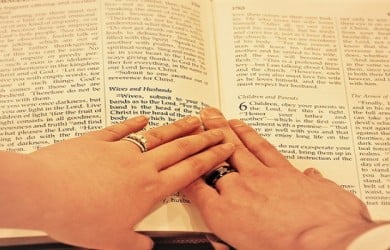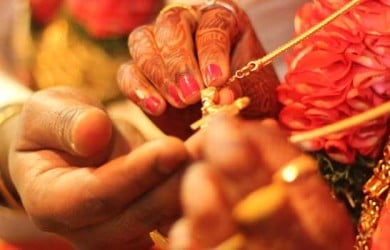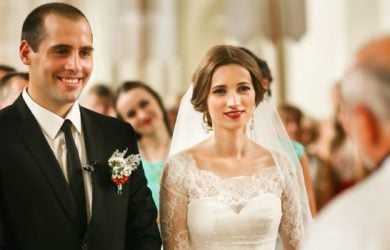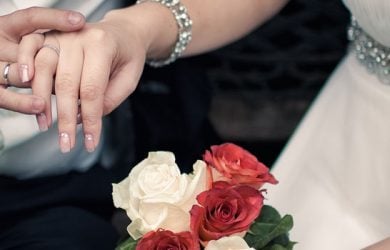Complete Guide for Your Perfect Wedding Processional Order

 Listen to this article
Listen to this articleWhen two individuals want to get married, a lot of planning goes into ensuring that the wedding ceremony turns out great. One of the important aspects that couples should be careful not to skip is the wedding processional order.
While it may seem complex to plan, it is interesting to note that planning the order of procession wedding is one of the easiest things to do, provided you know the right steps. In this article, you will learn what wedding processions are and how to plan them.
What does a wedding processional order mean?
A wedding processional order is the sequence in which the wedding ceremony will proceed. It often begins when the key event participants enter the wedding party.
A processional order for weddings can follow a traditional or customized arrangement, including the couple’s entrance, bridesmaids, groomsmen, parents, ring bearers, flower girls, and other important individuals.
The idea of a processional wedding order is to ensure a seamless ceremony flow from start to finish. Anyone who wants a properly coordinated wedding ceremony needs to prioritize planning the wedding processional order. This answers the question, what is wedding processional?
In this book by Henry S Basayne and Linda R Janowitz titled Weddings, you will learn the magic of creating your own ceremony.
Why is the wedding processional order important?
The wedding processional order is important for some reasons. It serves to build emotional anticipation during the ceremony. When the bride enters as the last key individual, her presence is always greeted with excitement and anticipation.
A wedding processional order helps to infuse coordination so that everyone involved in the ceremony will know how to play their duties. It is also important to mention that the wedding processional order honors the historical and cultural significance of weddings, aiming to preserve the tradition being passed down.
What are the types of wedding processional orders?
There are different types of processional order weddings, and they depend on couples’ preferences, religious and cultural demands.
-
Traditional wedding processional order
This is the order where the officiant, groom, groomsmen, ring bearer, bridesmaids, flower girl, and the bride walk in with her father.
-
Modern wedding processional order
Some couples may prefer to go the modern route where they enter together to symbolize unity and equal partnership in the marriage. The officiant will, however, be waiting at the altar for them.
-
Non-traditional/creative processional order
Not all couples may want to take the conventional route of doing weddings, so they may decide to do something different that is unique to them. They might choose to involve some guests who are special to them to participate in the processional.
Understanding traditional wedding processional order
The traditional wedding processional order is said to be one of the earliest sequences of weddings that have been used for a long time. When it comes to the wedding lineups for this processional order, it begins with the officiant, who enters first and stays at the altar.
Then, followed by the Groom, Parents of the Bride, Parents of the Groom, Bridesmaids and Groomsmen, Matron of Honor, Ring Bearer and Flower Girl, and the Bridem Most times, the bride is often escorted by her father or a father figure.
Non-traditional and modern wedding processional orders
The non-traditional order is sometimes called the creative processional order, and this is where the couple makes their wedding ceremony different from the traditional wedding procession.
Their idea is to break from the norm and create a ceremony that is tailored to their specific needs. This helps to make their event memorable and create a special experience for the guests.
A modern wedding processional order is a break from the traditional wedding procession order to highlight the couples’ preferences, beliefs, and values. In a modern wedding procession, the officiant enters first, followed by the parents, then the couple together, and other key individuals.
This helps to answer the question of who walks down the aisle and in what order regarding a modern wedding procession.
In this masterpiece by Daphne Rose Kingma titled Weddings from the Heart, you will learn more about the differences between Traditional and Contemporary weddings.
How to plan your wedding processional order: 5 helpful ways
Planning your wedding processional order the right way is important because it determines how your ceremony goes to a good extent. Here are some tips to help plan your wedding processional order
1. Discuss with your partner
The process of planning your wedding processional order should not be done alone. Discuss with your partner on the type of ceremony that works best for you. It is important to be united on all fronts so that when you discuss with other key stakeholders, your vision will not be sidelined.
2. Consider family peculiarities
When planning a wedding processional order, remember to consider the family dynamics of both parties. If there is any family member who has a special role to play, you can include them in the processional.
It is important to also consider your family preferences because they are an integral part of your life.
Here are some tips on dealing with family dynamics when planning your wedding:
3. Speak with the Ceremony Coordinator and Officiant
Ensure you carry the officiant and ceremony coordinator along because they can provide ideas based on their wealth of experience. If you desire that your processional order has a great flow, you need to collaborate with these key individuals.
4. Write down the plan
It is important to document the plan so that you don’t forget any aspect. After documenting the plan, share it with everyone involved so that they can read through over again.
5. Practice and rehearse
When you have a processional order that you want to work with, ensure every key individual practices so that everyone will understand their roles. Organize a few rehearsals so that the wedding ceremony flow will be seamless.
Commonly asked questions
Here are some additional queries about wedding processions and their simplest answers to help you further.
-
Who walks down the aisle first at a wedding?
Concerning the question of who walks down the aisle first, it is important to mention that it depends on the nature of the wedding procession.
Traditionally, the groom walks down the aisle first and waits for the bride. In the modern setting, couples may choose to enter together, or they may reverse the traditional order depending on their preferences.
-
Is it possible for the groom and bride to walk down the aisle together?
Yes, the groom and bride can walk down the aisle together, depending on their preference. Some couples may choose to enter together as a symbol of unity and equality as they embark on the marriage journey together.
Couples are free to decide on what they want regarding the overall flow of their wedding ceremony, including who walks first down the aisle.
-
Can the bride have two fathers to walk her down the aisle?
Yes, the bride can have two fathers walk her down the aisle in a wedding processional order. This arrangement is mostly done to honor the significant people in the bride’s life. It could be her father and brother, stepfathers, or a combination of father figures in her life.
The choice of having two fathers walk the bride down the aisle depends on the couples’ prerogative.
-
What is the usual order of the wedding party in the processional?
The order of a wedding party in the processional depends on the couples’ preference. Couples can tailor any wedding processional order to what suits them. What matters is that the wedding ceremony goes on seamlessly, and everyone knows their part to play.
-
What are the roles of the ring bearer and flower girl in the processional
The role of the ring bearer during the processional at weddings is to carry the wedding rings down the aisle. The ring bearer is often a cute young boy chosen to carry the rings, which will be used during one of the most important moments in the wedding ceremony.
The flower girl mostly carries a basket with flower petals, and she may scatter the petals while she walks down the aisle during the bridal procession. The ring bearer and flower girl help to improve the aesthetics at any wedding ceremony.
For a memorable wedding ceremony
In this study by Dawn Braithwaite and other authors titled Weddings, you will learn why they are an important cultural ritual. You will also learn how weddings take place in different traditions.
Having read this article on the wedding processional order, you now understand that it is ultimately up to the couple to decide what they want for their big day.
If you need more help on how to build a healthy and successful marriage, consider the services of a relationship expert or therapist.
 Tips
Tips
Write your tip or submit a video tip
All tips are reviewed before the publishing.
Share this article on
Want to have a happier, healthier marriage?
If you feel disconnected or frustrated about the state of your marriage but want to avoid separation and/or divorce, the marriage.com course meant for married couples is an excellent resource to help you overcome the most challenging aspects of being married.

























 We'd love your feedback!
We'd love your feedback! Thanks for your feedback!
Thanks for your feedback!
